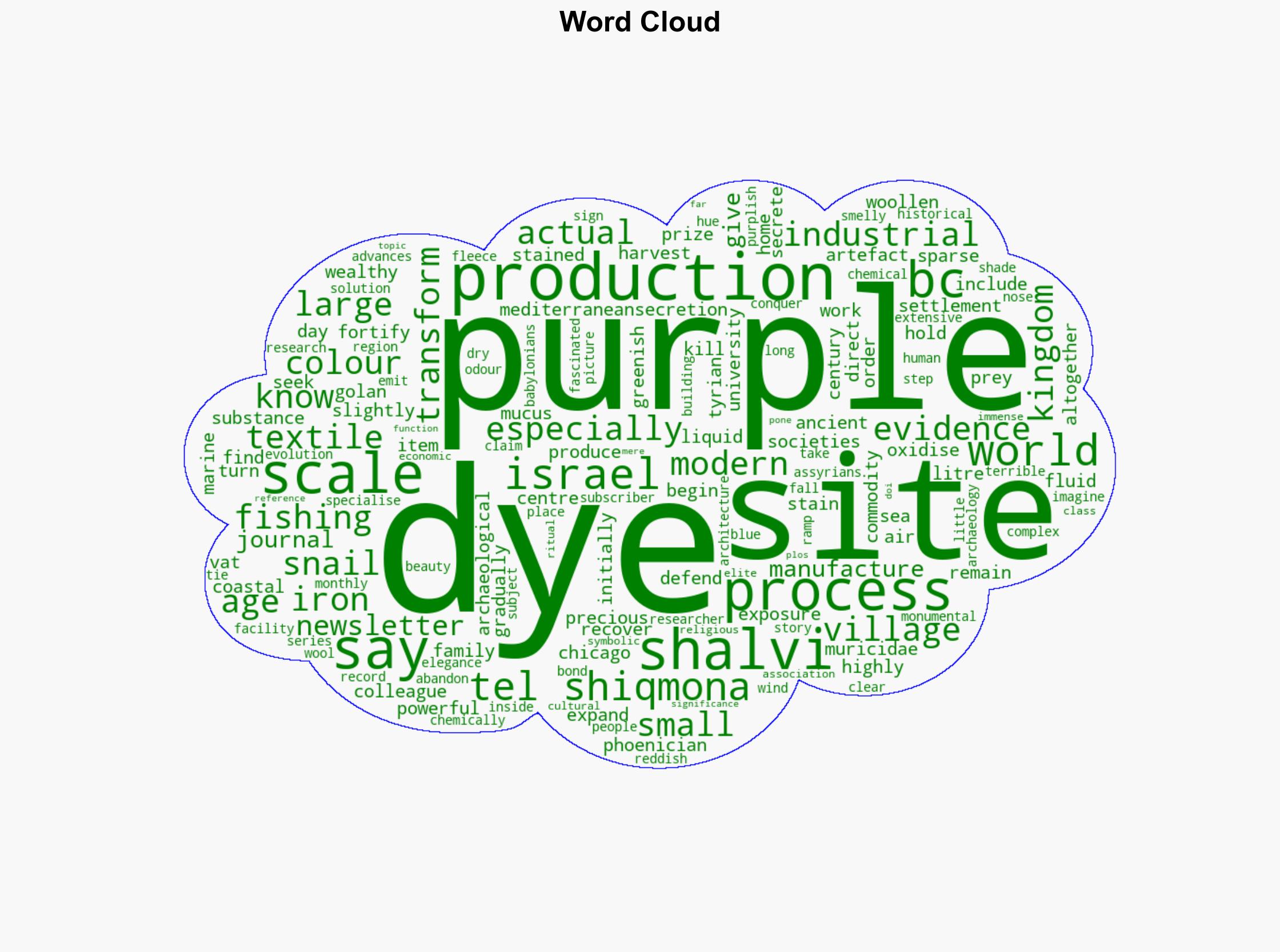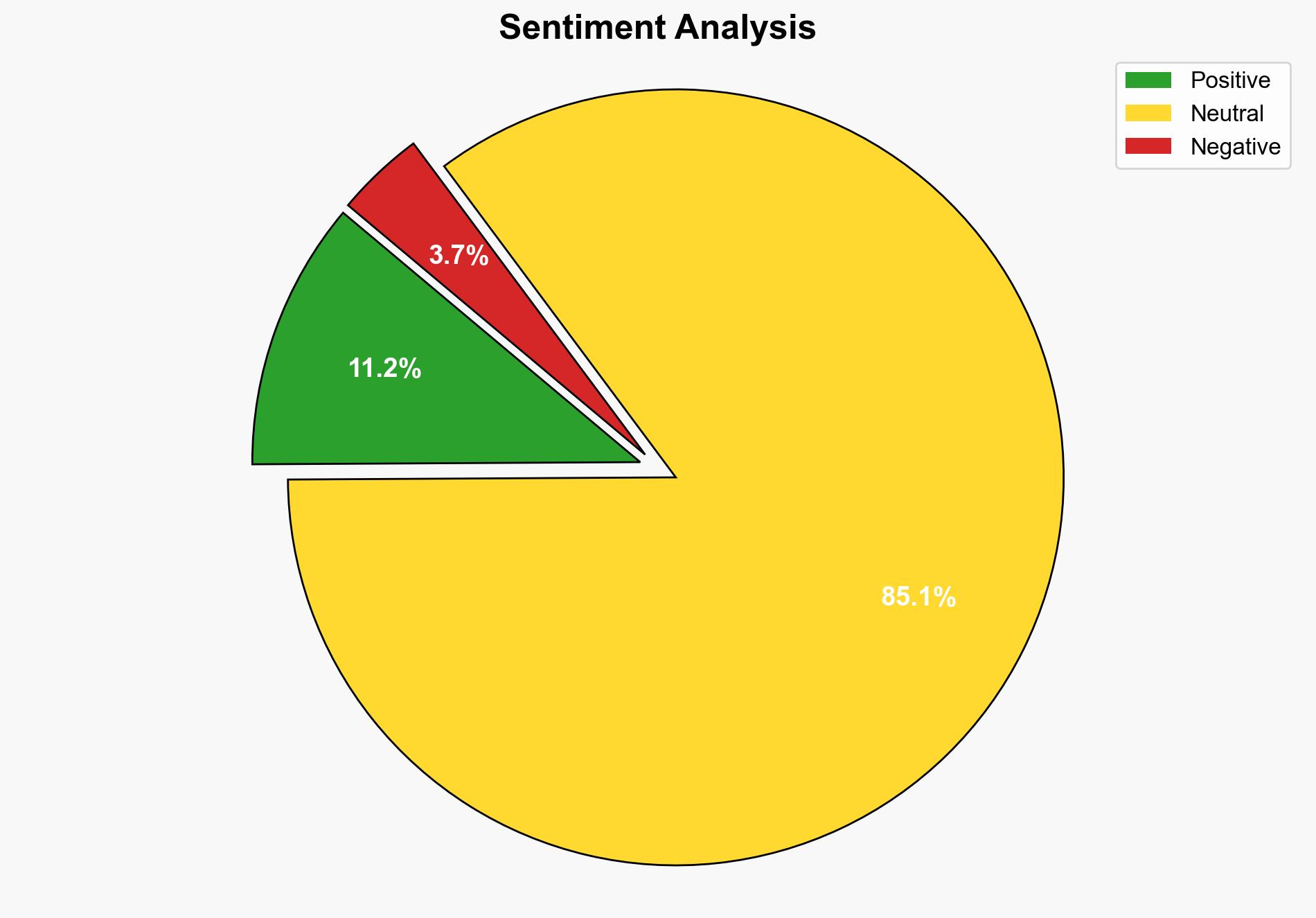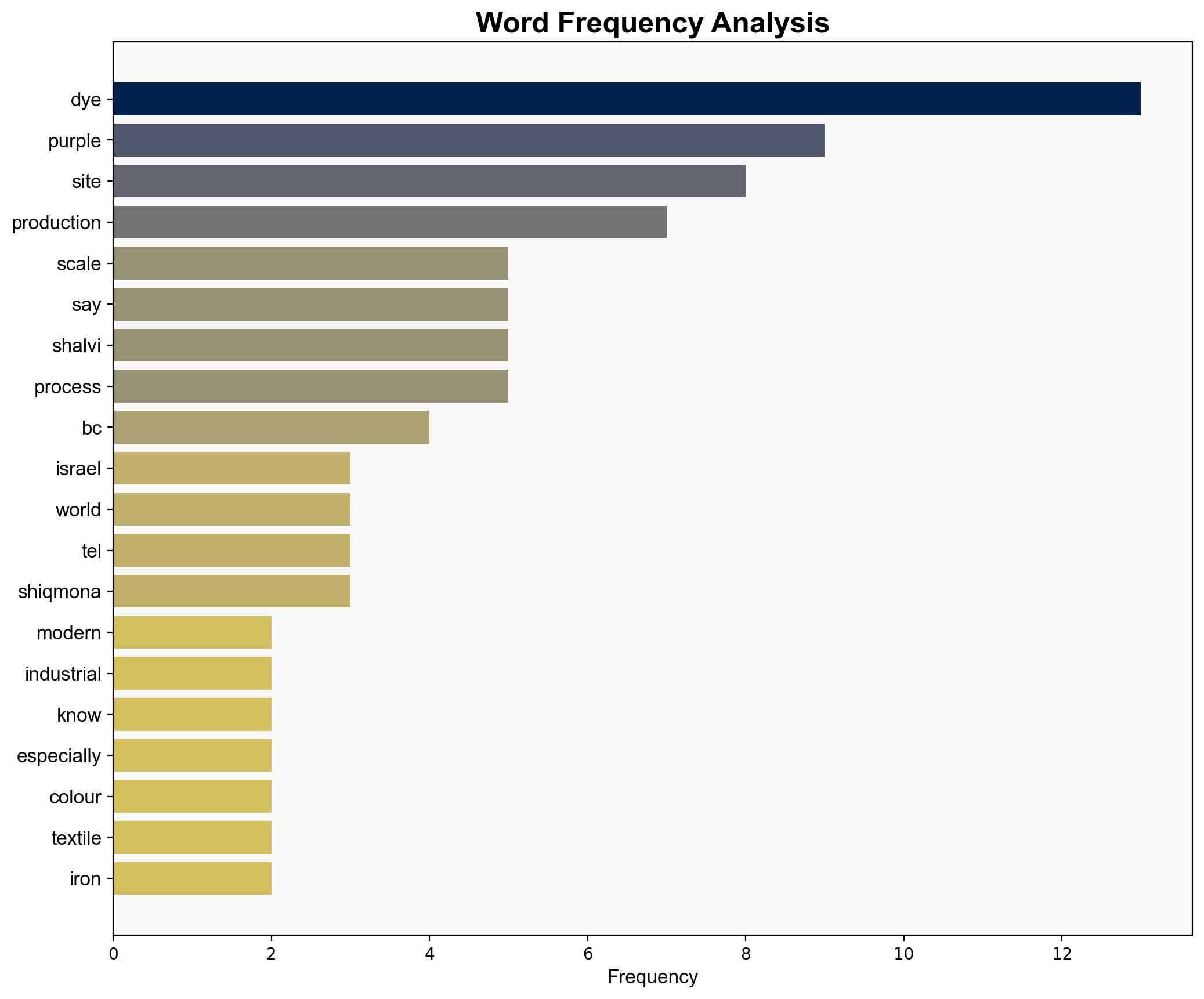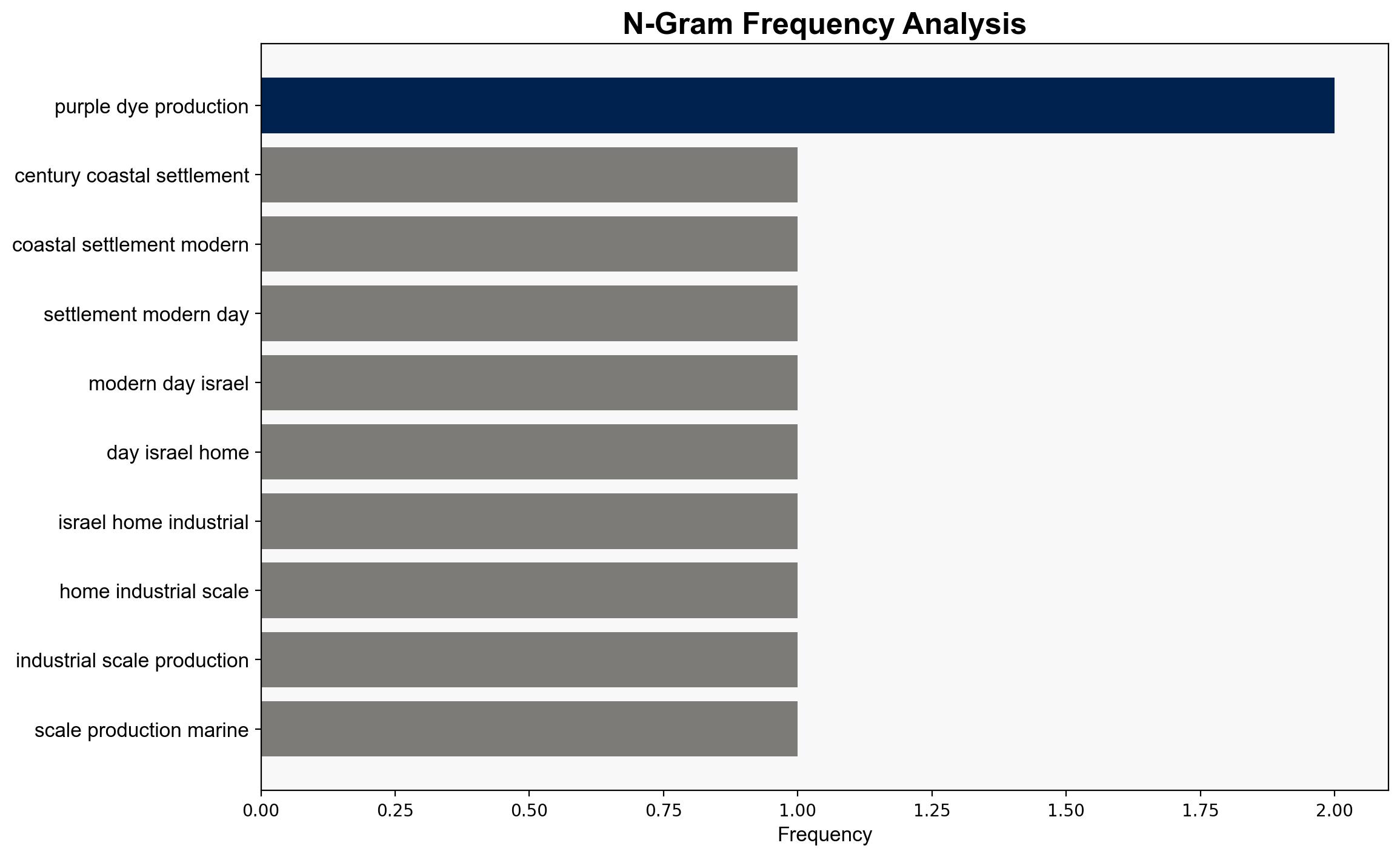Iron Age site was a purple dye factory for centuries – New Scientist
Published on: 2025-04-16
Intelligence Report: Iron Age Site Was a Purple Dye Factory for Centuries – New Scientist
1. BLUF (Bottom Line Up Front)
Recent archaeological findings at Tel Shiqmona, a site in modern-day Israel, reveal it as a significant center for the production of Tyrian purple dye from 1100 BC to 600 BC. This discovery highlights the site’s historical economic importance and its role in the ancient Mediterranean trade networks. The strategic implications of this finding include potential insights into ancient economic systems and cultural exchanges.
2. Detailed Analysis
The following structured analytic techniques have been applied:
SWOT Analysis
Strengths: The discovery provides concrete evidence of large-scale industrial activity, enhancing understanding of ancient economic practices.
Weaknesses: Lack of historical records and detailed knowledge of the dye production process limits comprehensive understanding.
Opportunities: Further research could uncover more about ancient trade routes and economic interactions in the Mediterranean.
Threats: Potential site degradation could threaten future archaeological work.
Cross-Impact Matrix
The findings at Tel Shiqmona may influence current archaeological priorities, potentially leading to increased focus on similar sites in the region. This could enhance understanding of regional trade dynamics and cultural exchanges during the Iron Age.
Scenario Generation
Scenario 1: Increased archaeological interest leads to new discoveries that reshape understanding of ancient Mediterranean economies.
Scenario 2: Limited funding and site preservation challenges hinder further research, leaving many questions unanswered.
3. Implications and Strategic Risks
The discovery underscores the economic and cultural significance of Tyrian purple dye, revealing potential vulnerabilities in ancient trade networks. Understanding these dynamics could inform modern economic and cultural policy decisions in the region. The lack of detailed historical records poses a risk to fully comprehending the site’s historical context.
4. Recommendations and Outlook
- Encourage further archaeological exploration and preservation efforts at Tel Shiqmona to enhance understanding of ancient economic systems.
- Promote interdisciplinary research to reconstruct the dye production process and its economic implications.
- Develop scenario-based projections to anticipate future archaeological findings and their potential impacts on historical narratives.
5. Key Individuals and Entities
Golan Shalvi





